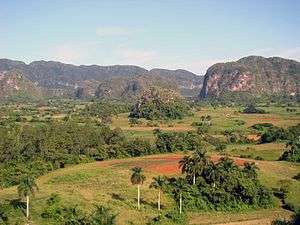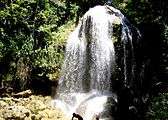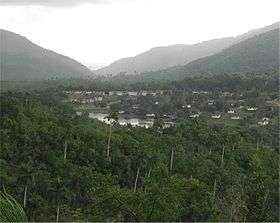Guaniguanico
| Guaniguanico | |
|---|---|
| Cordillera de Guaniguanico | |
 Viñales Valley, part of the cordillera | |
| Highest point | |
| Peak | Pan de Guajaibón |
| Elevation | 699 m (2,293 ft) |
| Coordinates | 22°47′26.66″N 83°21′53.03″W / 22.7907389°N 83.3647306°W |
| Dimensions | |
| Length | 160 km (99 mi) |
| Geography | |
| Country | Cuba |
| Provinces | Pinar del Río and Artemisa |
| Range coordinates | 22°43′19″N 83°28′48″W / 22.72194°N 83.48000°WCoordinates: 22°43′19″N 83°28′48″W / 22.72194°N 83.48000°W |

.jpg)
Guaniguanico, also known as Cordillera de Guaniguanico, is a mountain range of western Cuba that spans from the centre-west of Pinar del Río Province to the western area of Artemisa Province.[1] It is formed by the subranges of Sierra del Rosario and Sierra de los Órganos.[2][3]
Geography
The cordillera spans for a length of circa 160 km, from the town Guane, in the west of Pinar del Río Province, to the Alturas de Mariel, near Mariel, Artemisa Province. The two subranges composing it, Sierra de los Órganos (west) and Sierra del Rosario (east), are divided in the middle by the San Diego River (Río San Diego). The highest peak is the Pan de Guajaibón (699 m), located between the municipalities of Bahía Honda and La Palma. It represents a symbol of western Cuba.[4][3][5]
Landmarks
The Guaniguanico includes the Viñales Valley,[6] a natural reserve and World Heritage Site, and other landmarks as the waterfalls of Salto de Soroa and the nature reserve of Las Terrazas.
 Salto de Soroa waterfall
Salto de Soroa waterfall Las Terrazas natural reserve
Las Terrazas natural reserve
See also
References
External links
![]() Media related to Guaniguanico at Wikimedia Commons
Media related to Guaniguanico at Wikimedia Commons